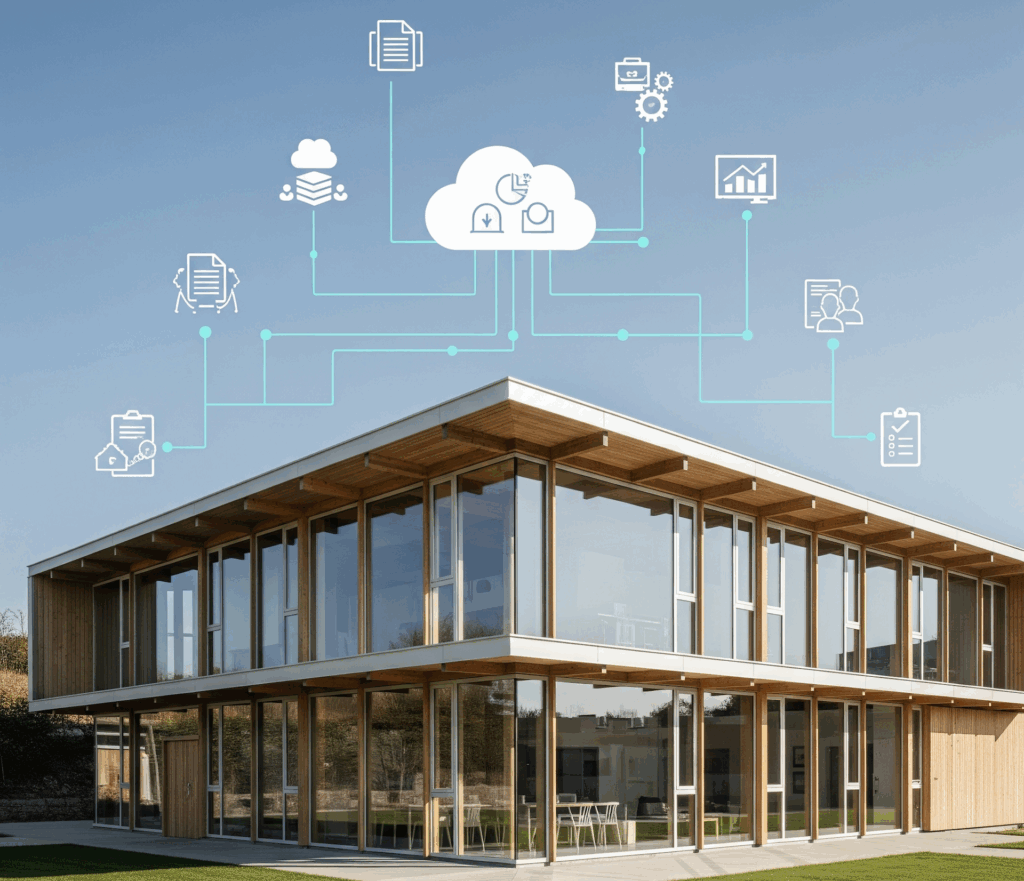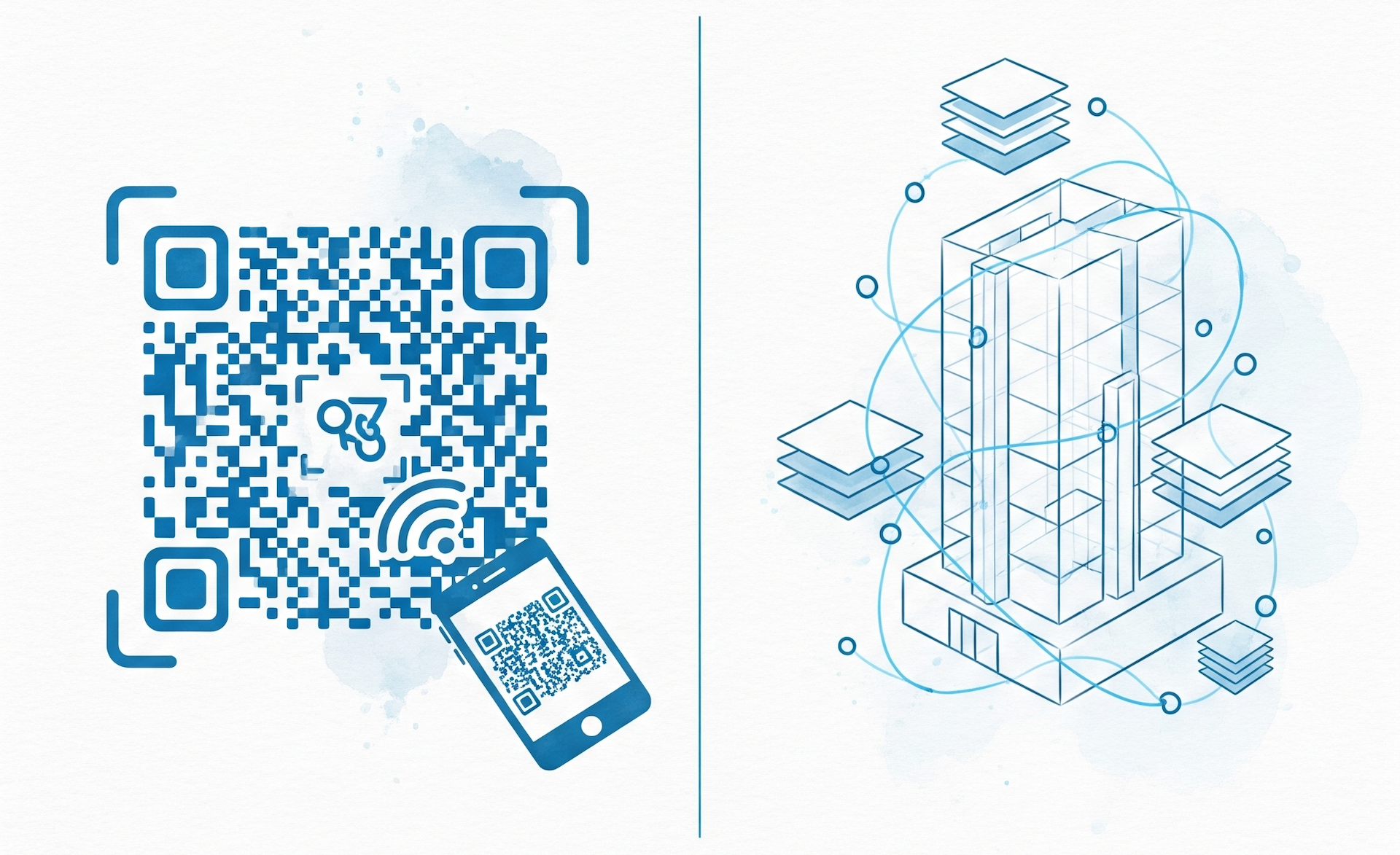BIM and QR Code: two technologies, two speeds
To best explain the concept behind Simmetri, we want to draw a parallel between two very different technologies: BIM (Building Information Modeling) and the QR Code. On one hand, a simple, immediate technology that is now familiar to everyone. On the other, a complex system, rich with tools and software, that is still struggling to achieve full adoption. This comparison helps us understand why BIM faces resistance and, above all, how Simmetri was created to simplify the approach to the digitalization of the built environment.
Why is BIM still struggling to spread?
When we talk about BIM, we often tend to think of it as an inevitable technological revolution. And yet, years after its introduction, its adoption is still slow, in both Public Administration and private projects. Why?
The reason is simple: BIM introduces a very high level of process complexity in a sector that for decades has worked with decidedly simpler tools and workflows. CAD, for example, was limited to drawing lines. The process was linear: you would draw, print the sheets, and deliver them in paper format or via certified email. Everything clear, everything under control.
With BIM, however, everything changes.
BIM: a revolution that is frightening.
BIM is not just a software. It’s a paradigm shift.
Everything is modeled in 3D, which is already more complex to manage than 2D.
You have to enter data, comply with information requirements, and coordinate with other professionals.
You no longer work in “silos,” each on their own: every design choice has an impact on others, and you have to be accountable for your work.
And then there’s the data: it comes out of the models, but how do you manage it?
What do I do with the structural data if I don’t have the tools to interpret it?
It’s not uncommon to hear phrases like: “BIM is useless,” “It costs too much,” “It’s good for nothing.”
The comparison with the QR Code
To better explain this dynamic, we want to make a comparison with a very simple technology: the QR Code.
When Denis graduated in 2005, he printed a QR Code on his thesis presentation board. It linked to a 3D video of a building he had digitally reconstructed. It was a tribute to the panoramic rotundas of the 19th century: circular rooms with huge painted canvases that offered an immersive experience ante litteram.
But what is a QR Code?
It’s an image that encodes a hyperlink. That’s it.
And yet, in 2005, nobody used them: phones didn’t have adequate cameras, there were no apps to read them, and browsers were slow.
Only 15-20 years later, QR Codes have become a standard. Today we find them everywhere: on billboards, menus, tickets.

And BIM?
BIM is much more complex than a QR Code.
It’s not just a link: it’s an ecosystem that integrates the design, construction, and management of the built environment.
But the software is still not very interoperable, is often complicated, and requires advanced skills.
It takes time. It takes patience. It takes realism.
I am convinced that the entire built and industrial environment will be managed through BIM and cloud platforms in the coming years.
But the path will be slow, as it is for all technologies.
We cannot impose BIM as if it were a dogma, an absolute truth.
We must listen to the market, adapt to its pace, and work to simplify.
Our answer: Simmetri
It is precisely from this conviction that Simmetri was born:
a cloud platform for managing the built environment through Digital Twin technologies.
We believe that digitalization must be accessible, even to those who are not engineers.
This is why we are building simple, intuitive, yet powerful tools.
If you are interested in better understanding what a Digital Twin is, take a look at our content on tre.digital.




